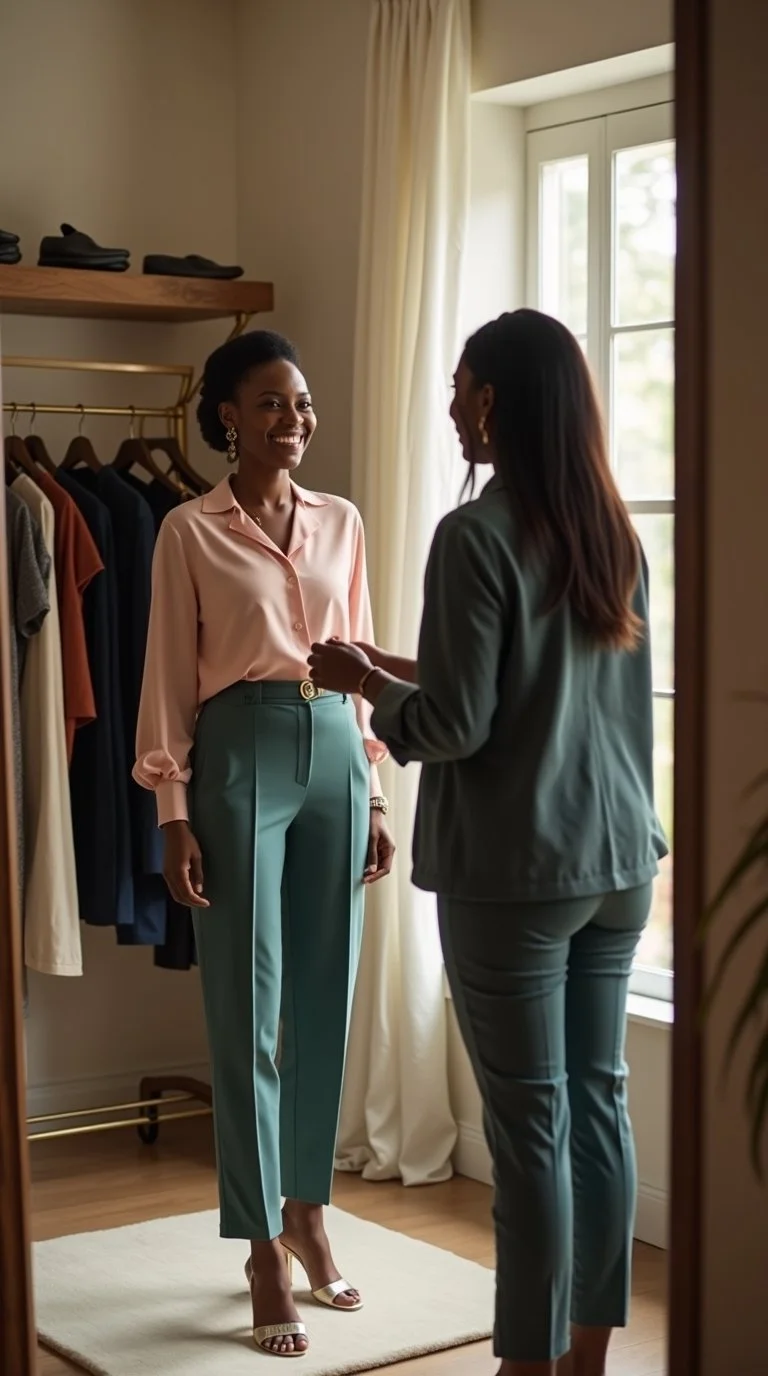Clothed in Respect: How Style Restores Dignity
When a woman steps into a space where every hanger holds possibility, something inside her begins to shift. She’s not being handed leftovers or made to feel grateful for what’s “good enough.” She’s being seen. Styled. Considered. And that difference, though quiet, is monumental.
At Well Dressed, we’ve learned that clothing alone doesn’t change a woman’s life. Dignity does. But clothing is often where that dignity begins to take shape.
The Hidden Weight of “Good Enough”
Too often, women coming out of hard seasons—whether incarceration, trafficking, homelessness, or simply loss—are handed what’s left over. A bag of donated clothes. A pile of what someone else no longer wanted. And while the intention might be kind, the message can still sting: You’re worth what’s left.
Clothing given without care tells a story about value, even when it’s unspoken. When garments arrive wrinkled, outdated, or ill-fitting, they don’t inspire confidence. They reinforce scarcity.
Dressing with dignity isn’t about labels or luxury—it’s about respect. It’s about showing a woman that her reflection deserves the same attention to detail that anyone else’s would receive.
Styled, Not Handed
In the Well Dressed program, every outfit is thoughtfully selected. Participants aren’t digging through bins or making do. They’re styled—head to toe—with intention. Each item is steamed, pressed, and presented on racks the way it would be in a boutique.
Why? Because the presentation matters. When clothes are treated with care, women internalize that care.
We’ve seen women pause, look in the mirror, and whisper, “I’ve never seen myself like this.” Not because the outfit was extravagant, but because it was theirs. Selected for their shape, their story, their next chapter.
The Psychology of Being Seen
When a woman is styled with care, it engages something deeper than appearance—it touches her sense of agency. In psychology, this is called “mirrored self-recognition.” Simply put, how we see ourselves in the mirror influences how we believe others see us.
When women are given the chance to choose pieces that align with how they want to feel—confident, capable, seen—they begin to build a new internal narrative.
Each woman gets to participate in the process—choosing silhouettes that make her feel strong, colors that lift her mood, and textures that remind her of comfort. That collaborative act restores power where it was once taken away.
When Care Becomes the Lesson
What restores dignity isn’t just the clothing itself—it’s how it’s given. A woman can tell instantly whether something was handed to her or chosen for her. The difference is care.
When women enter our program, they don’t walk into piles of random garments or bags labeled by size. They walk into a curated space that feels intentional. Clothing is arranged by color, fit, and purpose. Items are clean, pressed, and waiting on hangers—just as they would be in a professional styling suite. That presentation sends an unspoken message: You deserve this level of care.
Respect begins with slowing down enough to see the person, not just the need. It’s taking the time to ask, “How do you want to feel when you leave here?” instead of, “What do you need to wear?” That single shift—from utility to identity—changes everything.
We’ve learned that when women participate in styling sessions, they begin to rebuild trust in their own preferences. They rediscover what it feels like to have a say in how they present themselves to the world. That choice—of color, cut, or texture—becomes an act of healing.
A Scene That Says Everything
Picture this: two women stand in front of a mirror. One is trying on a blouse that fits perfectly for the first time in years. A volunteer adjusts the collar gently and says, “That color brings out your strength.”
There’s no speech about being lucky to have it. No emphasis on what it cost. Just a quiet exchange rooted in care. The woman straightens her posture, takes a slow breath, and smiles with disbelief.
When clothing is offered thoughtfully, it becomes a bridge to self-worth. It tells a woman: You deserve this care. And that message lingers long after she takes the clothes home.
Why Respect Changes Everything
Respect has texture. You can feel it in a clean hem, a pressed sleeve, or the tone of someone’s voice when they say, “Try this on and tell me how you feel.”
That tone is what changes everything. It says, You’re not invisible anymore.
For many women in the Well Dressed program, that’s the first time they’ve felt seen in years. When they look in the mirror wearing something chosen with them in mind, their posture changes. Their reflection feels familiar again.
It’s not just confidence—it’s reclamation.
The respect that begins with clothing extends far beyond it. Women walk differently. They interview differently. They begin to believe that they deserve to take up space, both in a room and in their own lives.
The Quiet Power of Care
There’s a profound difference between being helped and being honored. The latter asks for time, thought, and presence. It’s felt in the way someone folds a blouse carefully instead of tossing it aside, in the pause before saying, “Try this—it feels like you.”
When clothing is offered with care, it becomes more than fabric. It becomes a mirror—one that reflects a woman’s worth back to her. Each thoughtful gesture, each softened tone, each moment spent making something look beautiful says, You deserve to be seen like this.
Dignity isn’t loud. It doesn’t announce itself. It shows up quietly, in the details that tell a woman she matters. That’s where confidence begins—not in the clothes themselves, but in the respect that came with them.


